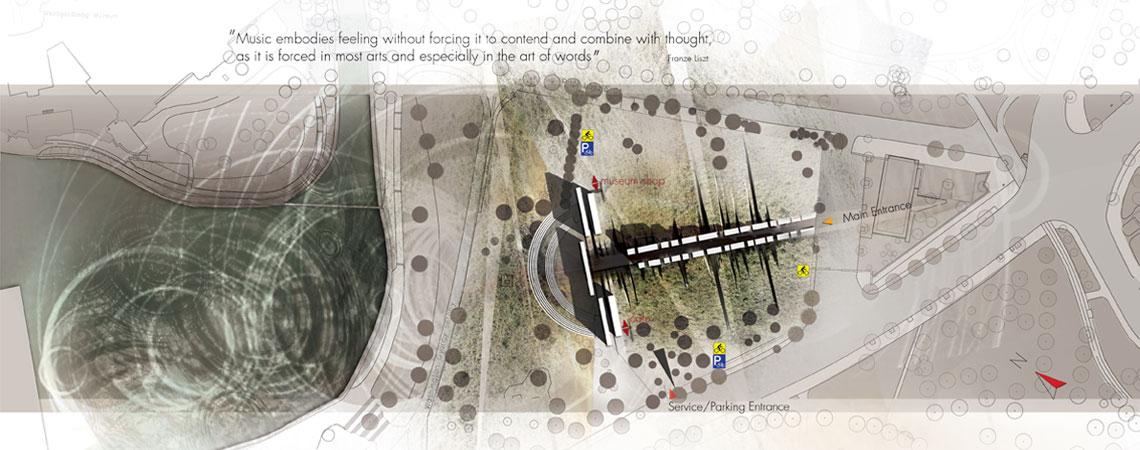
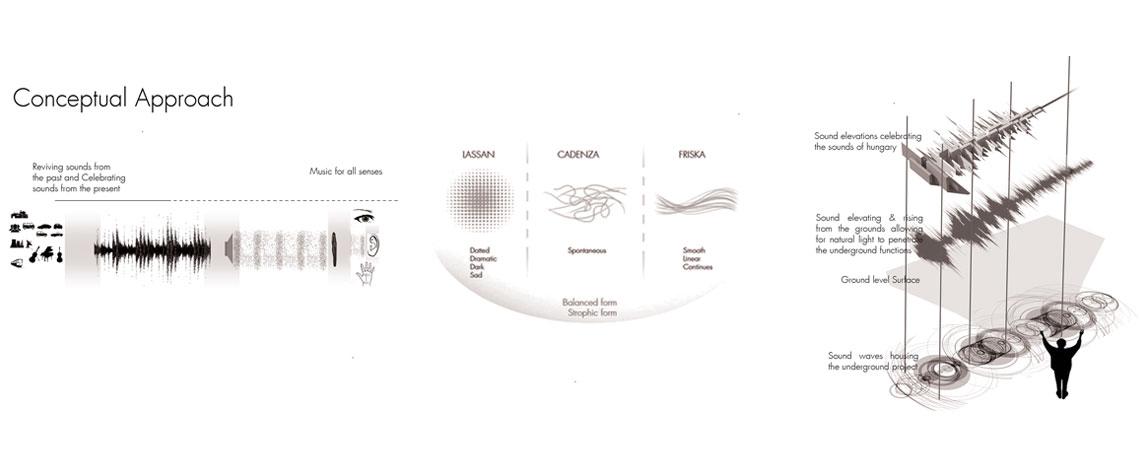
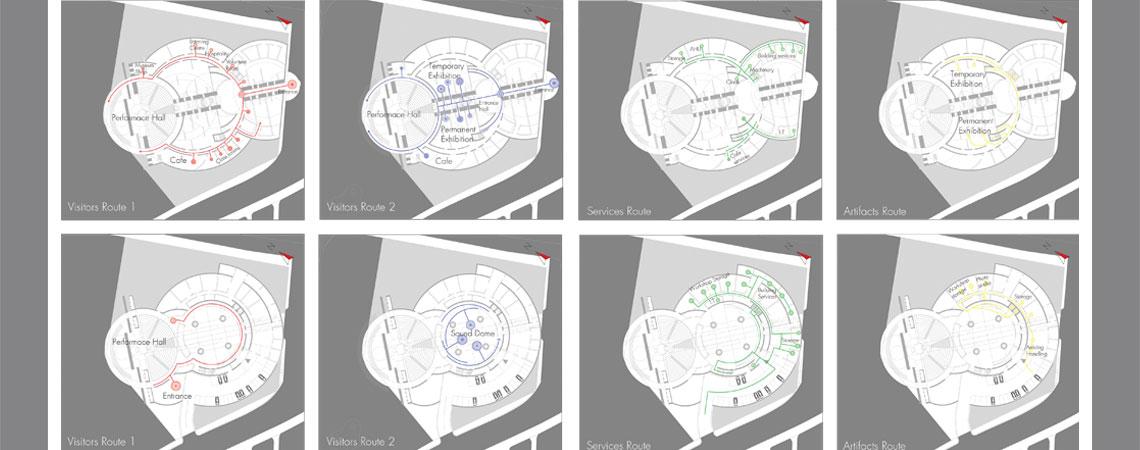

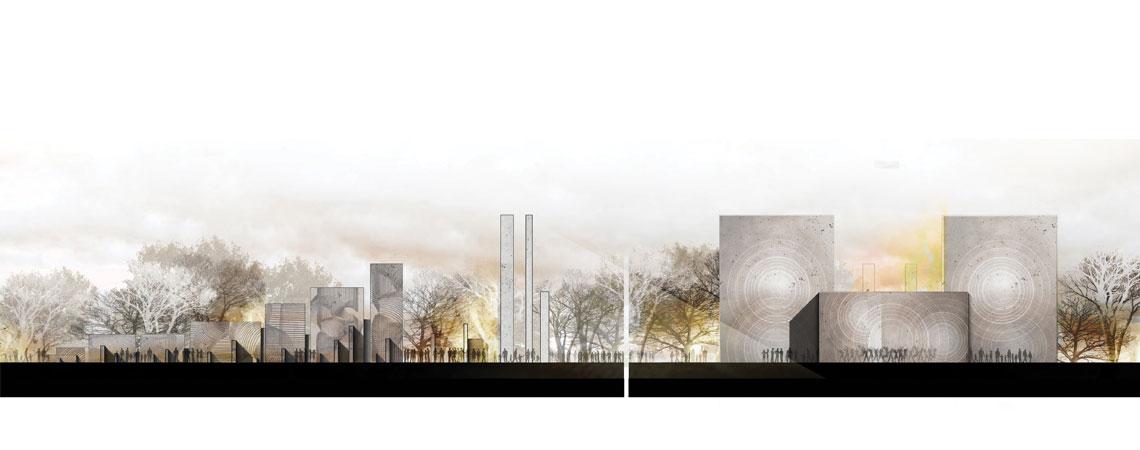
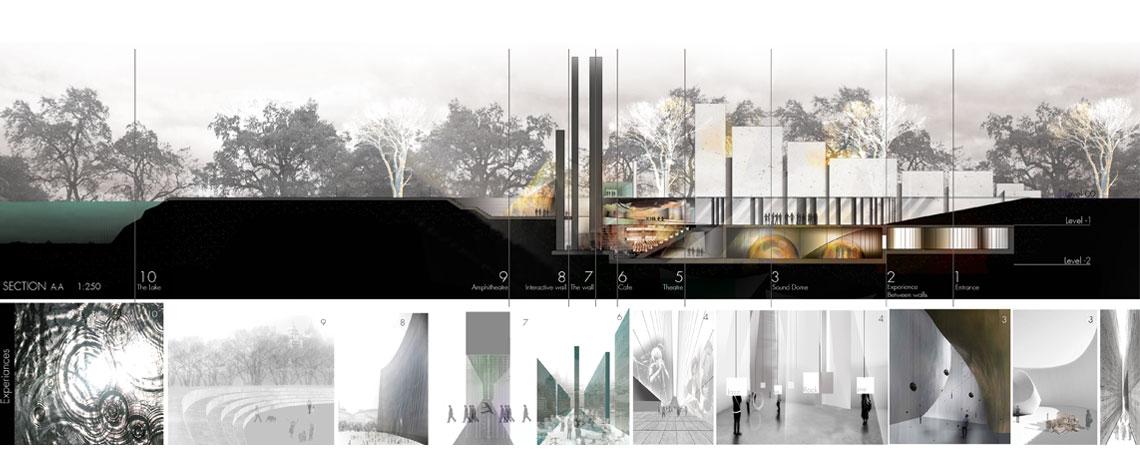
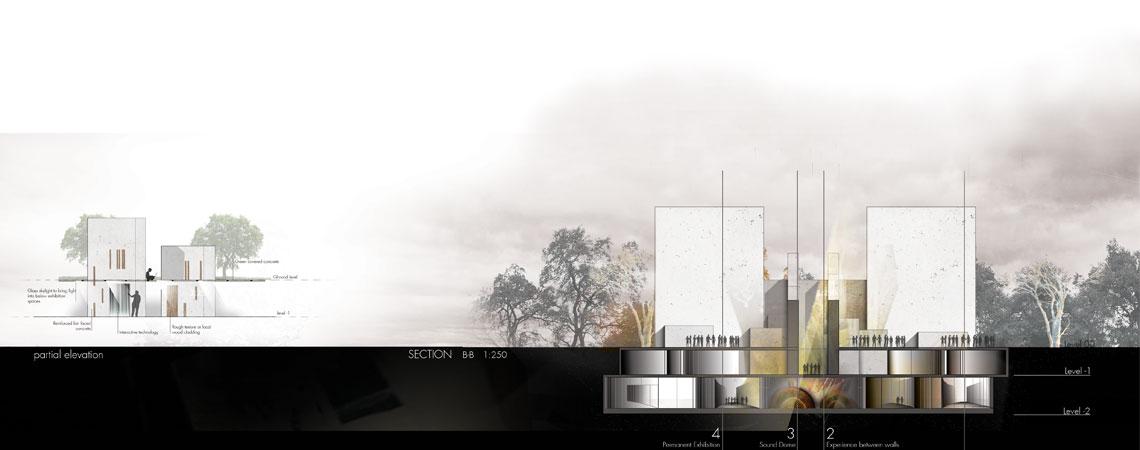
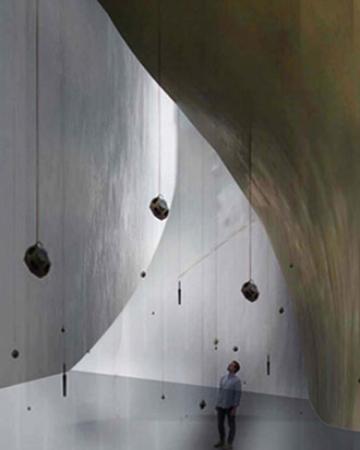

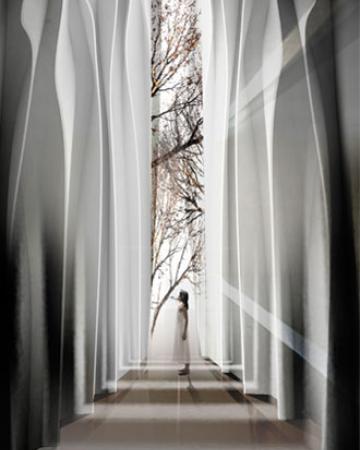
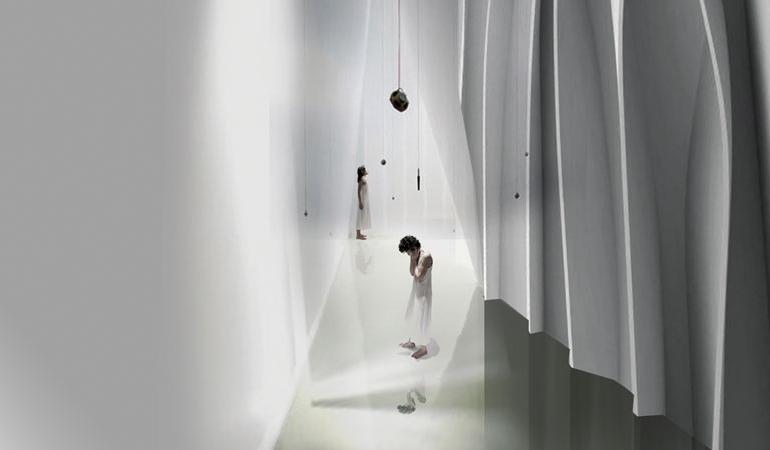

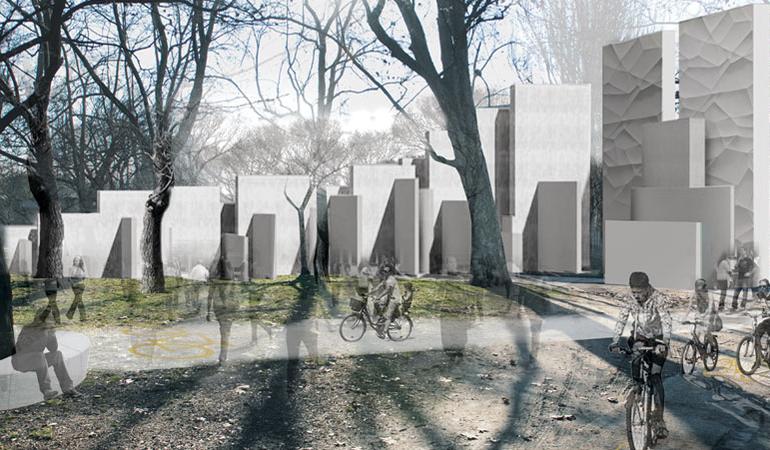
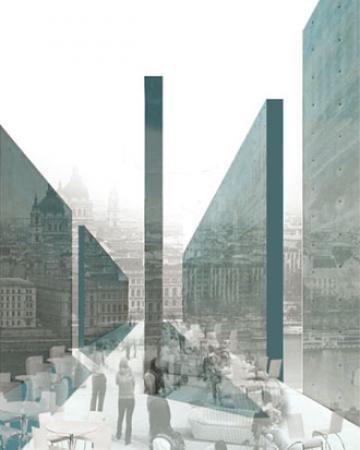
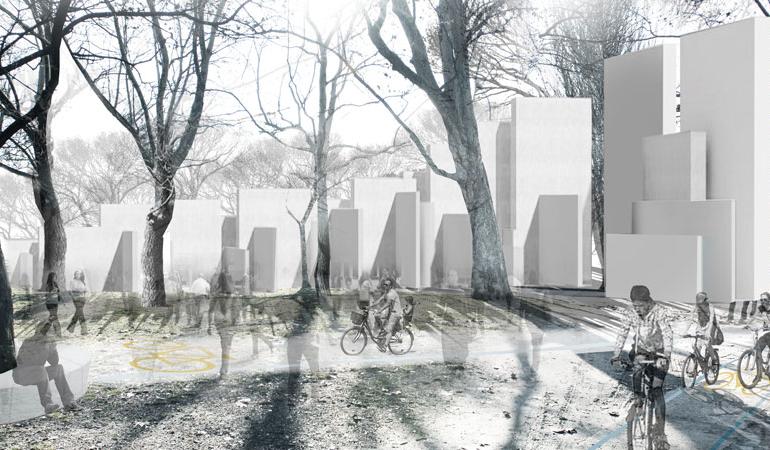
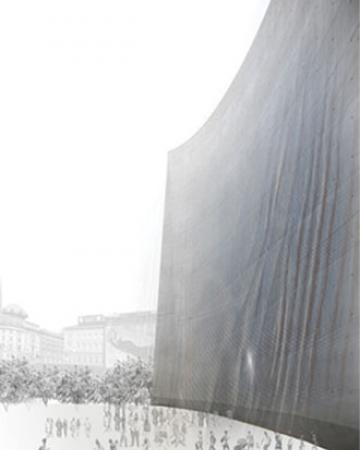

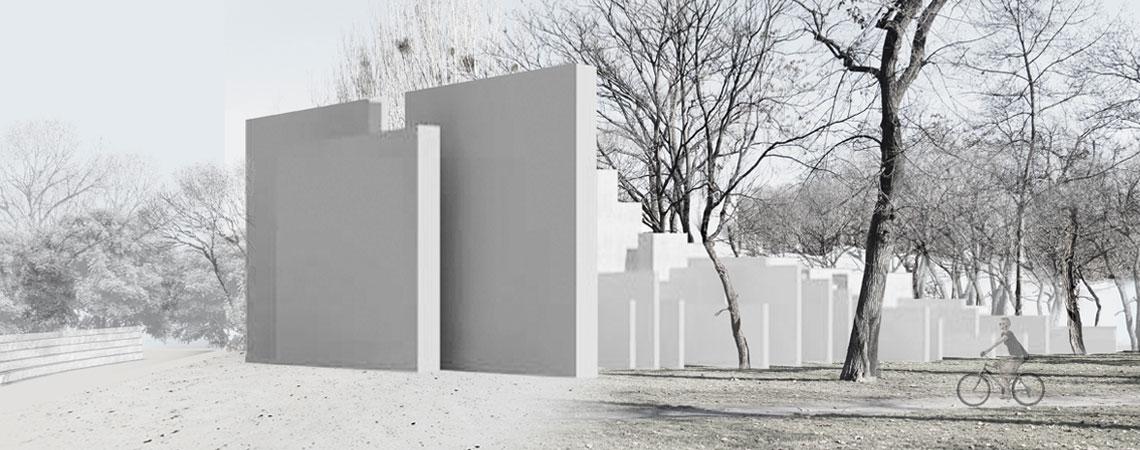

Music transcends all forms of artistic expression; it can be more effective than the written word, more moving than the painted canvas, and more dynamic than the chiseled stone. Music can be the purest form of emotional expression, where feelings of happiness or sadness, joy or pain, serenity or rage, can penetrate the crux of the soul and can define a whole new level of parallel realities. It Expresses that which cannot remain silent and that which cannot be put in words or form. Similar to the way music is a transcending spiritual experience; the House of Hungarian Music shall rise above the confines of its physical context to become a dynamic spatial experience.
The House of Music can’t be a building within what might be the first public park in the world, it can’t deprive the people of Budapest of the green space they enjoyed for years, it shall however, enhance and complement that reality by incorporating a unique metaphysical experience that builds on the physics of sound, architecture, and context. Just like a symphony, The House of Music operates within the tangible and intangible elements of such a music piece.
Its composition is somehow invisible and subtle while its final production is visible and impactful. The concept revolves around these two contrasting elements, translating and transcending sound through hidden and apparent architecture. Music is planted like a seed, and grows while touching people’s hearts. Similarly, the architecture aims to follow this metaphor, emerging from below ground and subtly bringing the people together with the sounds of their city, the sounds of their folk culture and with their inner sounds and emotions. Resembling the typical Hungarian musical piece, the Hungarian House of Music translates the strophic structure through the Lassan, Freiska and Cadenza and offers an enlightened journey through architectural spaces. These spaces embody the dramatic ordered Lassan intro, the upbeat and continuous Friska flow, and those occasional distinct Cadenzas in a purely balanced piece of art.
The architecture elevates from below ground, through a crack, a sculpture of sound is created above ground, forming an integral piece of art within Budapest’s green park. The sculpture is made of a series of functional walls placed alongside each other to depict the sounds of the city and engage with the public. The walls follow a sound pattern and expose music through different mediums.
These mediums include recent technologies that operate holistically in providing music for all the senses. Through vibrations, visual images, stimulation, motion and touch, as well as interactive screens and textures, the sculpture effectively creates visual and physical music within the space. The sculpture ends with a large wall, which acts as the screen for the outdoor open-air theater. The outdoor theater connects the below spaces with the ones above, giving the ability for people to meet and interact, enjoying the surrounding natural sounds of the trees, birds and the water, heightened by the echoing walls of the sculpture.


